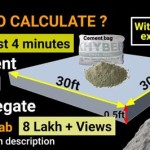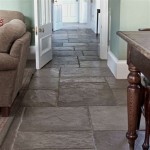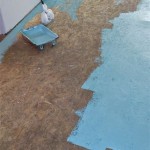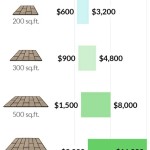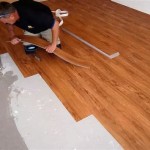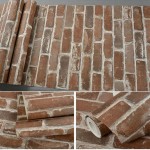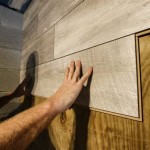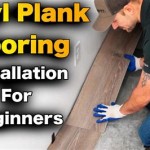The Best Way to Wash Vinyl Plank Flooring
Vinyl plank flooring has risen in popularity as a durable and aesthetically pleasing alternative to hardwood and other flooring options. Its water resistance, ease of installation, and variety of styles make it a practical choice for many households. However, like all flooring, vinyl plank requires regular cleaning to maintain its appearance and longevity. Understanding the best methods for washing vinyl plank flooring is crucial to prevent damage and keep it looking its best.
Understanding Vinyl Plank Flooring
Before delving into cleaning techniques, it's essential to understand the composition and characteristics of vinyl plank flooring. Most vinyl plank flooring consists of multiple layers. The bottom layer provides stability, followed by a core layer that may be made of fiberglass or a composite material. Above the core is a print layer, which gives the flooring its visual appeal, mimicking wood, stone, or tile. The uppermost layer is a wear layer, a transparent coating that protects the print layer from scratches, stains, and fading. The thickness of the wear layer is a significant factor in determining the durability of the flooring. Different brands and types of vinyl plank flooring have varying wear layer thicknesses.
Vinyl plank is generally water-resistant, but it's not entirely waterproof, especially at the seams between planks. Excessive moisture can seep into the subfloor, leading to mold growth or damage to the flooring adhesive. Therefore, it is crucial to avoid over-wetting the floor during cleaning.
Another factor to consider is the type of finish on the vinyl plank. Some flooring has a matte finish, while others have a glossy finish. The finish can affect how the floor looks and how easily it shows dirt and scratches. It can also impact the cleaning products that are suitable for its maintenance.
Essential Tools and Supplies
To effectively wash vinyl plank flooring, gathering the right tools and supplies is essential. These include:
*Broom or Vacuum:
A soft-bristled broom or a vacuum cleaner with a soft brush attachment is necessary for removing loose dirt, dust, and debris before washing. Avoid using vacuums with beater bars, as these can scratch the surface of the vinyl plank. *Mop:
A microfiber mop is ideal for washing vinyl plank flooring. Microfiber mops are gentle on the surface, highly absorbent, and effective at picking up dirt and grime. Avoid using sponge mops, as they tend to push dirty water into the grout lines and can leave streaks. *Buckets:
Two buckets are preferable – one for clean water and the other for rinsing the mop. This prevents reintroducing dirty water onto the floor. *Cleaning Solution:
Choose a cleaning solution specifically designed for vinyl plank flooring. Neutral pH cleaners are generally recommended, as they are gentle and won't damage the finish. Avoid using harsh chemicals, abrasive cleaners, or solvents, as these can dull the surface and cause discoloration. *Warm Water:
Warm water helps to loosen dirt and grime, making it easier to remove. *Spray Bottle (Optional):
A spray bottle can be helpful for applying the cleaning solution to specific areas or for spot cleaning. *Soft Cloths:
Soft cloths are useful for wiping up spills or drying any damp areas after washing. *Floor Protector Pads:
Consider placing floor protector pads under furniture legs to prevent scratches and dents on the vinyl plank flooring.Step-by-Step Washing Instructions
Following a systematic approach ensures a thorough and effective cleaning process.
1.
Preparation:
Begin by removing all loose items from the floor, such as rugs, mats, and small furniture. Sweep or vacuum the entire floor area to remove dust, dirt, and debris. Pay close attention to corners and edges, where dust tends to accumulate.2.
Prepare the Cleaning Solution:
Fill one bucket with warm water and add the recommended amount of vinyl plank floor cleaner. Strictly follow the manufacturer's instructions for dilution. Overconcentration of the cleaning solution can leave a residue on the floor, while under-concentration may not effectively remove dirt. Fill the second bucket with clean, warm water for rinsing.3.
Mop the Floor:
Dip the microfiber mop into the cleaning solution, wring it out thoroughly to remove excess water. The mop should be damp, not soaking wet. Begin mopping at one end of the room and work your way towards the other, overlapping each stroke slightly to ensure complete coverage. Apply gentle pressure to remove dirt and grime. Rinse the mop frequently in the clean water bucket to prevent spreading dirty water. Change the water in both buckets when it becomes visibly dirty.4.
Rinse (Optional):
If the cleaning solution instructions recommend rinsing, or if you notice a residue on the floor, mop the floor again with clean, warm water. Use a clean microfiber mop and wring it out thoroughly to avoid over-wetting the surface.5.
Dry the Floor:
Allow the floor to air dry completely. If desired, you can use a clean, dry microfiber cloth to gently wipe up any remaining dampness. Ensure that the floor is completely dry before replacing rugs or furniture.Addressing Specific Cleaning Challenges
Certain types of stains and messes require specific cleaning approaches.
Stain Removal:
For stubborn stains, such as food spills or scuff marks, try spot cleaning with a diluted solution of dish soap and water. Apply the solution to the stain, let it sit for a few minutes, and then gently scrub with a soft cloth. Rinse with clean water and dry thoroughly. For more challenging stains, consult the flooring manufacturer's recommendations for specific stain removal products.Scuff Marks:
Scuff marks can often be removed with a clean eraser or a soft cloth dampened with a small amount of rubbing alcohol. Gently rub the affected area until the scuff mark disappears. Avoid excessive rubbing, which can damage the finish of the flooring.Grease and Oil:
To remove grease or oil spills, sprinkle the affected area with cornstarch or baking soda to absorb the grease. Let it sit for about 30 minutes, then sweep or vacuum up the powder. Clean the area with a mild detergent and water, rinse, and dry thoroughly.Mold and Mildew:
In humid environments, mold and mildew can sometimes grow on vinyl plank flooring, especially in areas with poor ventilation. To remove mold and mildew, mix a solution of one part bleach and ten parts water. Apply the solution to the affected area, let it sit for a few minutes, and then scrub with a soft brush. Rinse thoroughly with clean water and dry completely. Ensure adequate ventilation to prevent recurrence of mold and mildew.Preventative Measures
Prevention is key to keeping vinyl plank flooring clean and minimizing the need for frequent washing.
*Regular Sweeping or Vacuuming:
Sweep or vacuum the floor regularly, preferably daily or at least a few times a week, to remove loose dirt and debris that can scratch the surface. *Entrance Mats:
Place entrance mats at doorways to trap dirt and moisture from shoes, preventing them from being tracked onto the vinyl plank flooring. *Floor Protector Pads:
Use floor protector pads under furniture legs to prevent scratches and dents when moving furniture. *Avoid Sharp Objects:
Be careful when moving sharp objects or wearing shoes with sharp heels, as these can scratch or damage the flooring. *Prompt Spill Cleanup:
Clean up spills immediately to prevent stains from setting in. *Proper Humidity Control:
Maintain proper humidity levels in the home to prevent excessive moisture, which can lead to mold and mildew growth.Common Mistakes to Avoid
Avoiding certain mistakes can help protect the integrity of vinyl plank flooring.
*Using Abrasive Cleaners:
Abrasive cleaners, such as scouring powders or steel wool, can scratch and dull the surface of vinyl plank flooring. *Using Steam Mops:
While steam mops are effective for cleaning many types of floors, they are not recommended for vinyl plank flooring. The high heat and moisture can damage the flooring and cause it to warp or buckle. *Over-Wetting the Floor:
Excessive moisture can seep into the seams between planks and damage the subfloor. Always wring out the mop thoroughly before washing. *Using Harsh Chemicals:
Harsh chemicals, such as bleach, ammonia, or solvents, can discolor or damage the finish of vinyl plank flooring. *Dragging Furniture:
Dragging furniture across the floor can cause scratches and dents. Always lift furniture when moving it. *Ignoring Manufacturer's Instructions:
Always follow the flooring manufacturer's instructions for cleaning and maintenance.Maintaining the Long-Term Appearance of Vinyl Plank Flooring
Consistent care and proper maintenance will help preserve the beauty and durability of vinyl plank flooring for many years.
Regular cleaning, preventative measures, and prompt attention to spills and stains are all essential for maintaining its appearance. By following the recommended cleaning techniques and avoiding common mistakes, homeowners can ensure that their vinyl plank flooring continues to look its best.
Consider re-applying a wear layer enhancing product annually, following the manufacturer's suggestions, to keep your floors looking their best. This extra layer of protection will help guard against scratches, scuffs, and fading, ultimately extending the lifespan of your beautiful vinyl plank flooring.

How To Clean Vinyl Floors

How To Clean Vinyl Plank Flooring Cutesy Crafts

How To Deep Clean Vinyl Floors Practically Spotless

How To Clean Vinyl Plank Flooring Expert Tips And Tricks Pro Housekeepers

Vinyl Plank Flooring Sandless In Seattle

How To Clean Laminate Floors The Home Depot

How To Clean Vinyl Floors Tarkett


How To Clean Vinyl Plank Flooring And Maintain It

How To Clean Luxury Vinyl Plank Flooring Lvp Pro Cleaning Tips
Related Posts

